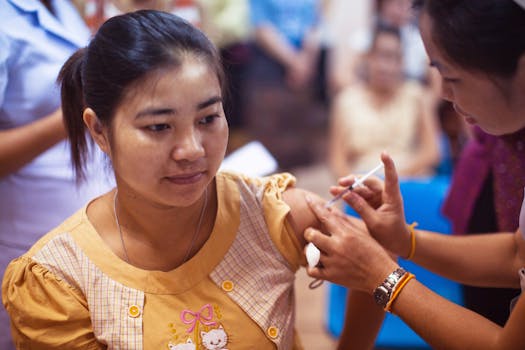
Introduction to Vaccines

Vaccines are one of the most significant advancements in medicine, providing immunity against infectious diseases and playing a crucial role in public health. With the rise of misinformation surrounding vaccines, understanding their science and the mechanisms behind immunization is essential. In this article, we will dive into the fundamentals of vaccines, their workings, and their immense benefits to society.
The Immune System: Our Body’s Defense

Before we explore how vaccines work, it’s vital to understand the immune system, which is our body’s defense mechanism against pathogens such as bacteria, viruses, and fungi. The immune system consists of various cells, tissues, and organs that work together to identify and eliminate threats. Key players include white blood cells – particularly lymphocytes – which produce antibodies that target specific pathogens.
How Do Vaccines Work?

Vaccines contain components that mimic infectious agents, such as weakened or inactive parts of a pathogen, proteins, or genetic material. When a vaccine is administered, it effectively trains the immune system to recognize and respond to the actual pathogen without causing the disease. There are several types of vaccines, including:
- Inactivated vaccines: These vaccines contain killed pathogens which cannot cause disease but can still stimulate an immune response.
- Live-attenuated vaccines: Composed of weakened pathogens that replicate without causing illness, these vaccines often provide long-lasting immunity.
- Subunit, recombinant, or conjugate vaccines: These full or part components of the pathogen elicit immune responses without incorporating live genes.
When vaccinated, the body produces memory cells that “remember” the pathogen. If the body encounters the real pathogen in the future, the immune system can quickly recognize and neutralize it, thereby preventing disease.
The Impact of Vaccination on Public Health

Vaccination has led to a dramatic decrease in the prevalence of various infectious diseases. Diseases that once caused widespread illness and death, such as polio and measles, have been virtually eradicated in many parts of the world owing to effective vaccination programs. The World Health Organization (WHO) notes that vaccines prevent 2-3 million deaths worldwide each year. Additionally, herd immunity is created when a critical percentage of the population is vaccinated, protecting those who cannot be vaccinated, such as infants or immunocompromised individuals.
Addressing Vaccination Challenges

In recent years, vaccine hesitancy has emerged as a significant challenge to immunization efforts. Misconceptions about vaccines and fears propagated by misinformation can harm public trust in vaccination programs. It is crucial to promote transparency, provide evidence-based information, and engage communities to build confidence in vaccines. Partnerships between healthcare authorities, professionals, and communities can amplify the positive message about vaccines and renew focus on their significant role in safeguarding public health.
Conclusion

Understanding the science behind vaccines not only highlights their importance but also fortifies support for practices that immunize communities. Vaccination forms the bedrock of preventing infectious diseases and enhancing population health. As a society, it is imperative to combat misinformation, embrace scientific education, and persist in making vaccines accessible. Through continued advocacy and education regarding the life-saving impacts of vaccines, we take a resolute step towards a healthier future for all generations.





